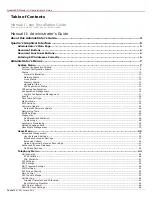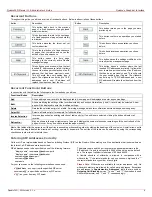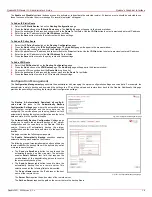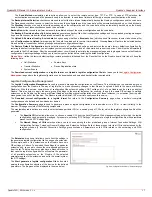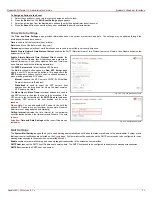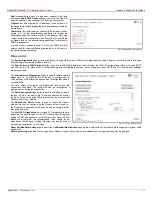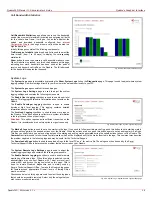
QuadroFXO Manual II: Administrator's Guide
Quadro's Graphical Interface
QuadroFXO; SW Version 5.1.x
13
The FXO Channel Usage Statistics page consists of following
components used to define the chart parameters:
Trunk checkboxes are used to select the FXO line number(s) over
which the FXO traffic chart will be built. At least one Trunk checkbox
should be selected, otherwise error message appears.
Time range of statistic table drop down list includes the period (in
days) statistics data that is to be collected and the corresponding
diagram chart that is to be built.
Incoming Calls and Outgoing Calls checkboxes are used to select
whether the FXO traffic statistics for only incoming or outgoing or for
both type of calls should be displayed in the diagram chart.
Maximum Active Calls checkbox is used to have the number of
maximum active calls displayed in the diagram chart.
At least one of these checkboxes should be selected, otherwise error
message appears.
Fig. II-15: FXO Channel Usage Statistics page
Show button is used to generate an FXO channels usage diagram chart
over the parameters selected above.
When this button is pressed, FXO Channel Usage Statistics chart
appears. It represents dependency between the time frame and the
number of calls performed during that period. Additionally it may display
the maximum number of calls performed in the selected time frame.
Fig. II-16: FXO Channel Usage Statistics chart
Memory Status
The Memory Status page includes tables with the available User
Space information for each extension. These tables display the space
used by the voice mailbox and uploaded/recorded system greetings. It
shows the free and total space (counted in minutes/seconds) for every
extension. This page includes the following information:
Memory Size shows total memory space (counted in minutes/seconds)
available on the Quadro and assigned to all extensions.
The table’s links lead the administrator to the extension settings page
where User Space may be altered.
Call Statistics shows the current number of calls with recorded statistic
entries.
Fig. II-17: Memory Status page


